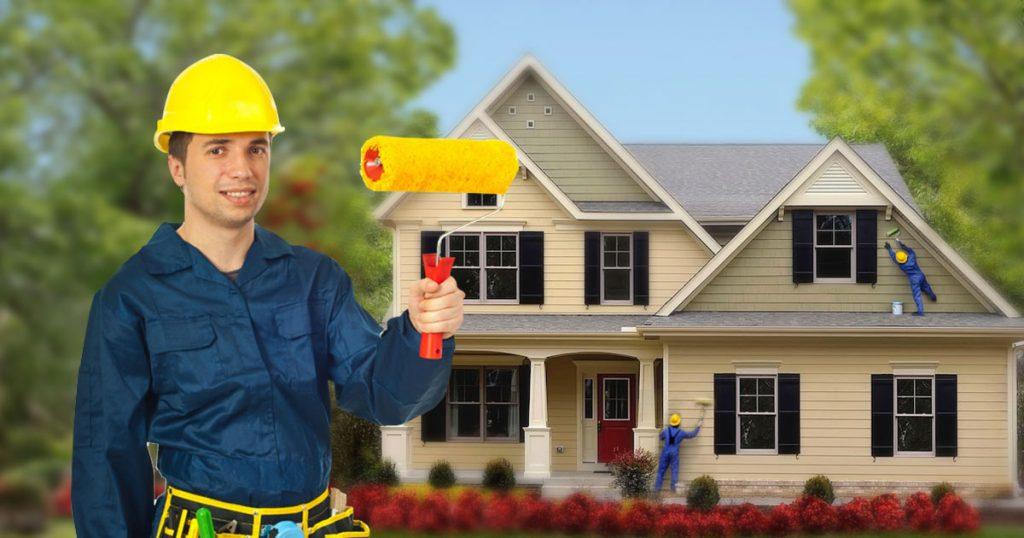Choosing the right exterior paint can make a big difference in both the look and durability of your home’s surfaces. Exterior paints are designed to withstand all kinds of weather and protect your home from the elements, whether it’s bright sunshine, heavy rains, or freezing temperatures. So, what’s the best exterior paint? Let’s dive into the different types and finishes available, and what makes each of them suitable for your home’s exterior.
Why are there specific paints for outdoors?
Outdoor paints have a more durable formulation than interior paints. This includes resins that allow the paint to expand and contract with changing weather, as well as added UV protection to prevent fading. These specialized paints are built to adhere to exterior surfaces like wood, brick, and stucco, ensuring they withstand rain, wind, and temperature fluctuations without peeling or cracking. Simply put, they’re made to protect and look good under tough conditions.
Factors to Consider When Choosing an Exterior Paint
When picking exterior paint, here are a few key factors to keep in mind:
- Climate conditions
- Surface material
- UV resistance
- Color retention
- Adhesion strength
- Application ease
- Longevity
- Environmental impact
The Best Types of Paints for Your Home’s Exterior
There’s a wide range of paint types suitable for exteriors, each with its own benefits and ideal use cases. Below are some of the top options you’ll find.
Acrylic Paint
Acrylic paint is known for its flexibility, making it a popular choice for areas with significant temperature changes. Because it doesn’t harden as much as oil-based paints, it’s less likely to crack over time, which means your paint job could last longer. Acrylic paints also offer good resistance to both UV rays and moisture, which helps in maintaining color and protecting the surface.
Latex Paint
Latex paints are water-based and very user-friendly, with easy clean-up and low odor. They dry faster than oil-based paints and are less prone to blistering and fading in the sun. Latex paints are suitable for almost any surface, from wood siding to masonry, and they’re environmentally friendly too, thanks to their low VOC (volatile organic compound) levels.
Alkyd Paint
Alkyd, or oil-modified paint, combines some of the qualities of oil and latex paints. It’s often used on surfaces like metal, as it provides strong adhesion and durability. It dries to a smooth, hard finish, making it a good choice for high-touch areas like doors and railings, though it does have a longer drying time and higher VOC levels than latex.
Epoxy Paint
Epoxy paint provides a tough, high-resistance coating suitable for surfaces that need added protection, such as garage floors. It resists both chemicals and physical wear, making it ideal for heavy-duty outdoor surfaces. However, epoxy paint can be tricky to apply and typically needs professional installation.
Oil-Based Paint
Oil-based paints, while not as commonly used for exteriors today due to their higher VOC content, provide an excellent smooth finish and strong adhesion. They are known for their high durability and weather resistance, especially in areas prone to harsh winters. These paints, however, do tend to yellow over time and are more labor-intensive to apply and clean up.
Elastomeric Paint
Elastomeric paint is incredibly elastic, making it perfect for surfaces that expand and contract frequently. This type of paint is often applied to masonry or stucco, as it helps cover minor cracks and protects against moisture. Elastomeric paints can be thicker than other types, and they may require multiple coats for the best results.
Types of Exterior Paint Finishes
Just as with paint types, choosing the right finish matters for achieving the desired look and durability.
Satin
Satin finish is low-sheen and very popular for siding, as it hides imperfections well and is relatively easy to clean. Its slight gloss keeps it looking fresh without drawing too much attention to surface flaws.
Eggshell
An eggshell finish has a soft luster, similar to satin but even subtler. This finish works well for exterior walls and siding, providing a more matte look with just a hint of shine. It’s a good middle ground for those who want low sheen without the dullness of a flat finish.
Flat or Matte
Flat or matte finishes have no gloss and are excellent at hiding imperfections. They are ideal for older homes with more textured surfaces, but they may require more maintenance as they tend to attract dirt.
Semi-Gloss
Semi-gloss paint has a noticeable shine and is quite durable, making it perfect for trim, doors, and other high-contact areas. It’s easy to clean, so if you’re in a dusty area, semi-gloss can be a smart choice for parts of the home that see regular handling.
High Gloss
High gloss has the highest sheen and offers a rich, reflective look. While beautiful, it also emphasizes flaws, so it’s best for smaller, smooth surfaces like shutters and front doors. High gloss is the easiest to clean and provides superior protection against moisture, but its application requires a steady hand to avoid streaks.
Selecting the Ideal Exterior Paint for Your Home
Selecting the best exterior paint requires balancing durability, aesthetic, and compatibility with your home’s materials. Whether you choose a water-based acrylic for easy maintenance, a durable oil-based paint for extra resilience, or a flexible elastomeric paint for masonry, investing in high-quality paint tailored to your environment ensures a lasting, beautiful exterior. High-quality paints from top brands, specifically formulated for exteriors, offer lasting color, weather resistance, and protective finishes that help homes look their best year after year.
